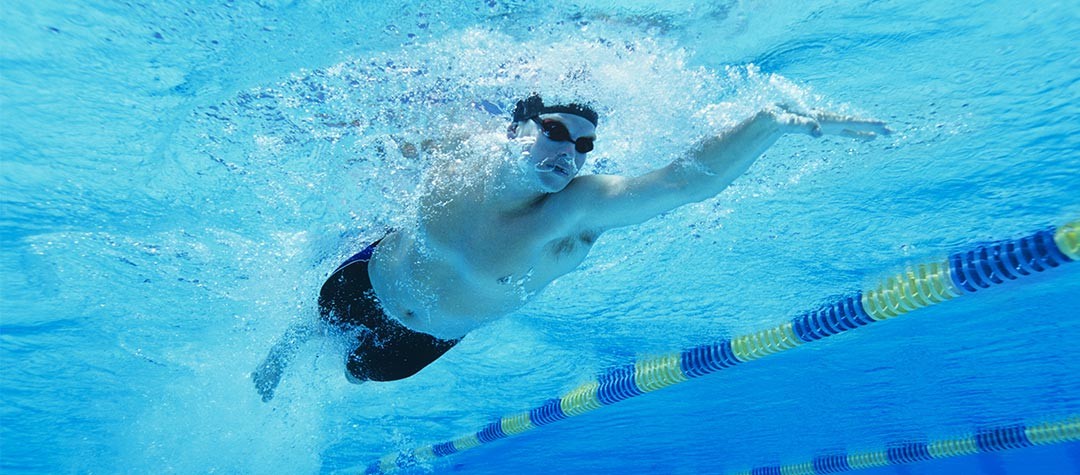Here are 10 essential tips every swimmer needs, particularly the beginner, to help you master the pool swim.
If you are a swimmer who churns out many miles a week and yet are not improving, it can be frustrating. It may be time to look at what you are doing before, during and after each session in order that you make better progress.
1. Have the right equipment
A watch to monitor your times, a hat that fits, finding the right pair of goggles that don't leak and are comfortable. While they they all may seem basic concepts, they can make a huge difference to your sessions and mind set. If you have any irritations in equipment it can be the difference between having a good session or not.
2. Warm up and cool down
Make sure you allow at least 10 per cent of the session to warm up and warm down. If you blast into the session, you could cause an injury. Do a few lengths of each stroke at a nice easy pace to warm up a variety of muscles. If the majority of your main set are strokes that involve an overarm action such as front crawl and butterfly, to warm down it can be really effective for you to do some backstroke to move your shoulders in the opposite direction to loosen them off after a tough session.
3. Stretching
Stretching will also help to get blood flowing and warm your body up before a session. Here are some examples of effective stretches for swimmers which should be held for 20-30 secs.
Pectoris stretch - Stand side onto a wall or pole with elbow at a right angle, gradually slowly press the body forward away from the bent arm.
Shoulder external rotation - Stand with one arm reaching across the back. Grasp the elbow with the other hand and pull toward the mid line of the back and repeat both sides.
Back extension - Lie on your front and with bent arms equal distance width of your hips and arms extend straight to gently raise the upper body.
Neck stretch - Arms behind the back standing up straight. Starting with left side push head and ear directly downwards towards the left shoulder and hold. Repeat again on the right side.
4. Rest
Make sure you have one or two rest days a week, especially if you have had a hard week of working; resting can be as important as training. If you find your performance in the pool is suffering, it could be you need to have a day off and come back fighting fit.
5. Training Partner
Having a training partner, ideally someone faster than you who will push and get the best out of you.
6. Training time
Try and train at a time when you know there is a lane swimming session and the pool will be less busy, there is nothing worse than being held up in your session due to too many bodies or slower swimmers.
7. Plan your training
Have a clear specific training program for each session. You need to get the balance of stroke technique work and speed depending on your goals. If you are training for endurance then I found training at three-quarter pace with limited rest of 5/10 secs effective to build stamina. If sprinting is your event then you will push close to full speed between each set and have more rest in between.
8. Race Challenges
Book a race event/ challenge to incentivise yourself and adapt the training plans accordingly over a period of time.
9. Strength training
Do at least once/twice a week in the gym for strength training . As a guide for long distance lift lighter weights and gradually increase repetitions for muscular endurance at a slow pace. If it’s sprinting you need to gradually increase weights and more explosive with the movements. Vary the activities for both so your body doesn't get use to them, the so-called 'Total body confusion' principle.
10. Nutrition
Eat well at least one hour before training. In addition make sure you are well hydrated and take a drinks bottle to the pool for your session. Types of foods to eat before a high intensity session are carbs foods such as pasta, wholemeal rice as well as some fruit such as bananas which are a good source of potassium.
Also eat well afterwards, ideally protein to recover the breakdown of muscle fibres and calories burned. Examples of these foods include lean chicken, turkey, lean beef, eggs, low fat cheese. Other healthier options include fresh fruit and low fat yogurt.














